Diabetes mellitus can lead to neuropathy in about 50% patients after about 5 years of diagnosis. With each passing year, this percentage increases. Also, blood vessels are diseased leading to reduced blood supply to various organs especially foot. Due to neuropathy an abnormal blood flow, diabetics are more prone to develop foot problems like ulcers, deformities, infection, corns, calluses etc. This is called diabetic foot. So, foot care in diabetes is an important aspect of diabetes management.
Here are some tips for foot care in a diabetic-
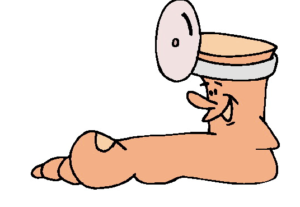
1. Check your feet daily
– Look for any cuts, bruises, swelling, redness, corns or calluses.
– You can use a mirror to see if you have difficulty in seeing the sole.
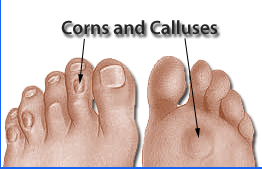
If you notice any such injury or pain, consult your doctor immediately for treatment.
Untreated callus can cause ulceration.
2. Wash your feet daily
- Wash your feet daily with warm water and mild soap.
- Don’t soak it in water for long time as it can cause drying and cracks.
- After washing, dry your feet specially between toes.
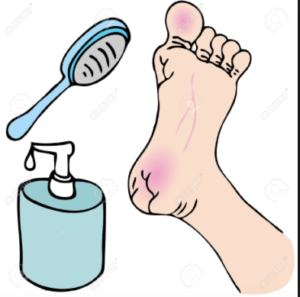
3. Moisturize the skin
- Apply a moisturizer (lotion, cream or petroleum jelly) on your feet after drying.
- Avoid applying it in between your toes.
- You can ask for a special moisturizer from your doctor if your feet are extra dry.
4. Other important points
- If the skin is moist and sweaty, apply spirit to it twice a day including area between the toes.
- Don’t walk barefoot.
- Do not try to treat foot problems on your own.
5. Nail cutting
- Cut your nails whenever needed.
- Nails should be cut preferably after bath as the nail plate is softer, more flexible and easy to cut.
- You can remove the dirt from around or under the nails with a soft nail brush.
- Be careful while cutting, you should cut them straight across or a gentle curve (otherwise you may leave a spike of nail that can cause ingrowing toe nail).
- The corners should not be cut out.
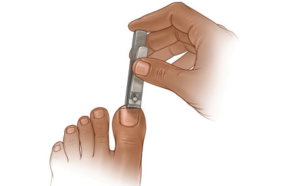
- Do not cut nail plate in one piece (use gentle nibbling technique)
- Do not cut the nail plate so short that the seal between nail and nail bed is broken.
- Nail should not be so long that they catch with socks and cause injury.
- Due to some reason ( if you cannot see properly or cant reach them) , you cant cut them, you can see a podiatrist (foot specialist).
6. Socks
- Always wear socks with shoes because they reduce friction.
- Socks should be made up of absorbent material like cotton.
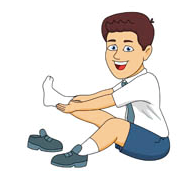
- Socks should fit well and seamless (If socks have prominent seams, then wear them inside-out).
- They should not have tight band or constriction anywhere.
7. Footwear
- Shoes should be comfortable and fit well.
- Check inside of the shoes and remove any stones or sand etc present.
- If shoes cause pain, callus, red marks or blisters, this means they don’t fit well and they should be changed.
- Wearing ‘good shoes’ is very important. This helps in preventing or delaying deformities, callus or injuries.
- Here are some tips for buying shoes for a diabetic-
- Always buy the shoes in the evening ( because feet may swell up when a diabetic stand for long time).
- Shoe should be long, broad and deep.
- Toe box should be spacious to avoid any pressure on toes or borders of foot.
- Heel cup should fit well and comfortably.
- Don’t use high heel shoes ( should be < 5cm).
- Shoes should get fastened with a lace or strap to hold back foot properly in the shoe.
- Shoe lining should be smooth.
- Avoid wearing court shoes/ belly shoes or slippers.
- If you want to use sneakers (sports or athletic shoes), buy the one which is long enough ( gap between great toe and shoe should be at least 1.25cm), broad and deep. Soles should be cushioned. Shoes should have laces/strap.
- Sandals don’t give much protection from trauma and may not hold foot firmly in place. But they may be worn in hot climate.
8. Management in case of injury –
If you notice any injury/ wound, manage it in the following way –
- Clean it with running water or saline solution ( To prepare saline solution, put two teaspoon salt in 250 ml previously boiled water).
- Apply a liquid antiseptic after dilution.
iii. Then put a clean dressing or bandage.
- If it doesn’t heal in few days or if you notice redness, swelling or pain, see your doctor immediately.
Remember-
- Good control of sugar, blood pressure and cholesterol is very important for managing foot problems as well.
- Stop smoking
- Appropriate footwear is required to prevent foot problems
- Annual foot screening should be done.
ALL THE BEST!!
